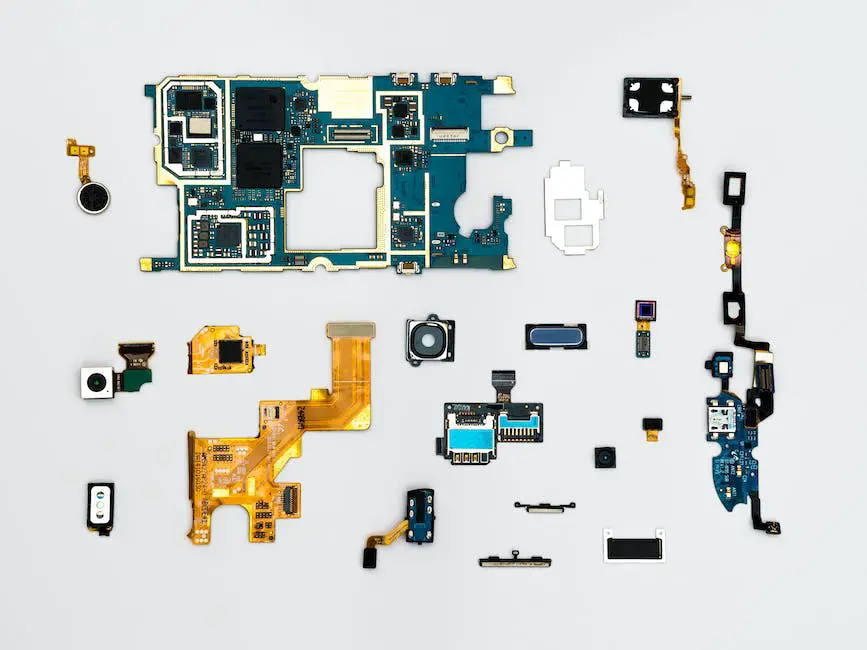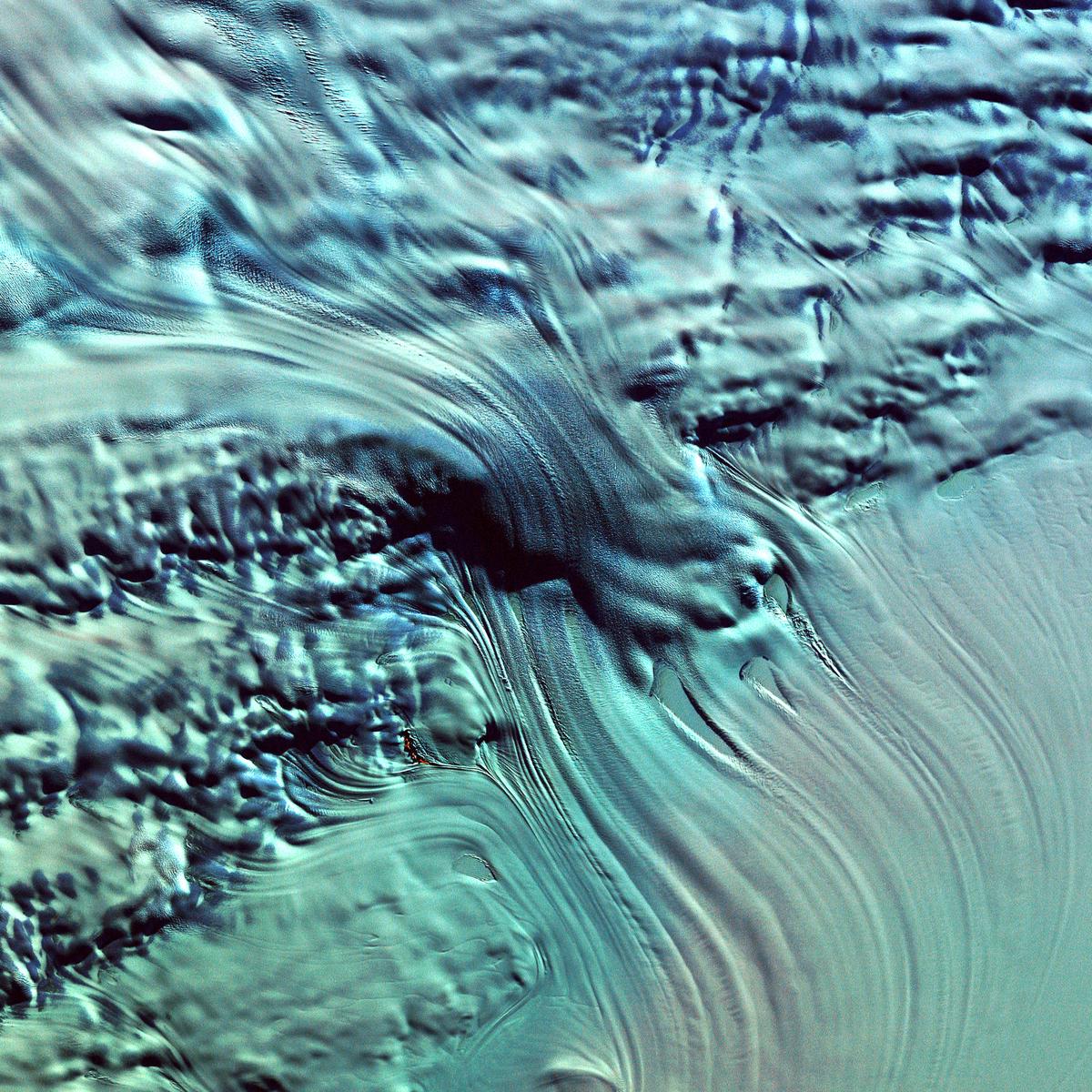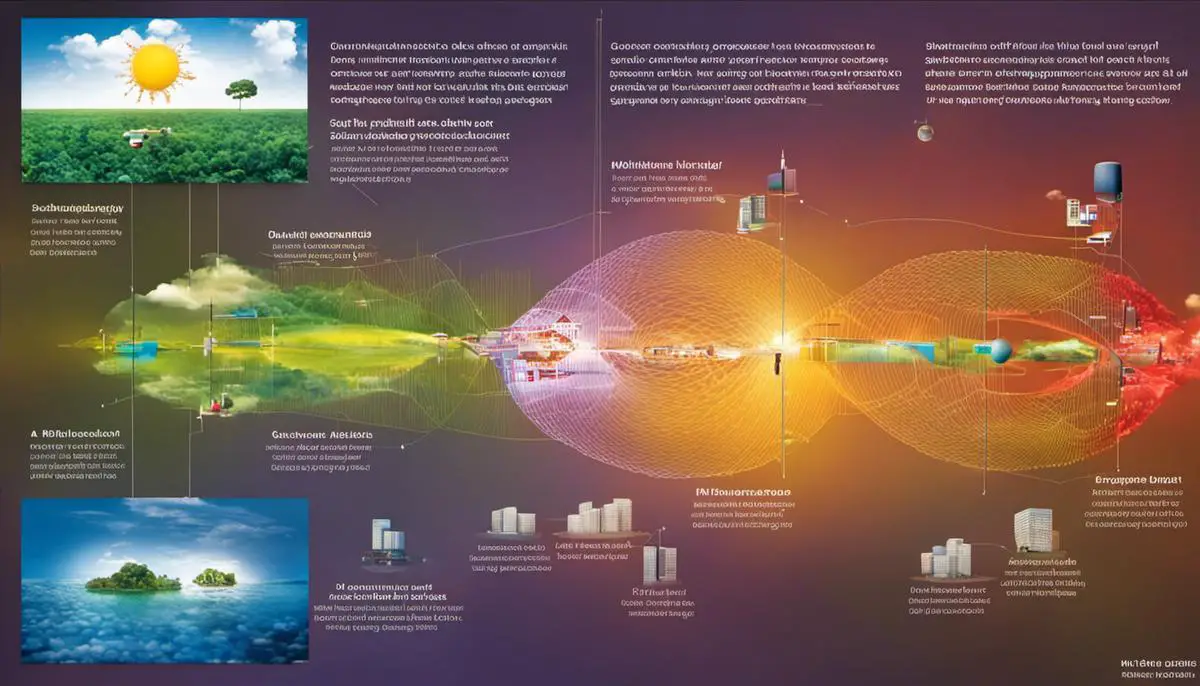Enabling the creation of rich, detailed virtual images that mirror reality, diffusion models are an integral part of numerous areas, spanning from digital art to machine learning. The advent of these models has revolutionized the realm of image synthesis, linking the nuances of mathematical theory with the praxis of image generation to craft high-quality results.
This exposition embarks on a journey through the fascinating landscape of diffusion models, providing an understanding of their fundamental concepts, tracing the diffusion process that plays a pivotal role in image creation, and bringing to light their real-world enactments and applications. Additionally, it peers into the thrilling prospects that lie on the horizon, charting probable developments in this captivating field.
Contents
Understanding Diffusion Models
Understanding Diffusion Models
Diffusion models have emerged as a groundbreaking tool in realistic image generation, addressing the limitations of traditional models while providing advanced techniques for synthetizing highly realistic images. These models operate on the principle of stochastic diffusion, a probability process based on random walks, which results in diffusion-like phenomena.
Historical Context and Purpose
In the context of image synthesis, the significant strides brought by diffusion models came as a response to the limitations of Generative Adversarial Networks (GANs). While GANs were successful in generating high-quality images, they were also notorious for their unstable training dynamics and lack of diversity in generated images. Facing these challenges, researchers turned their attention to alternatives that could offer similar or superior image quality with more stability and diversity.
That’s where diffusion models stepped in, presenting an entirely different approach to image synthesis. Unlike GANs, which leverages adversarial training to learn an implicit data distribution directly, diffusion models adopt a stochastic process-based framework where the data distribution is learned explicitly and the model is optimized based on the data likelihood. This new approach enabled the generation of more varied and realistic images with more stable training dynamics.
Mathematical Principles Underlying Diffusion Models
A basic understanding of stochastic differential equations (SDEs) is crucial to grasp the mathematical principles underlying diffusion models. SDEs model systems affected by noise, representing a process driven by random white noise. In diffusion models, an SDE describes the trajectory of the noise image until it becomes a sample from the model. The key is to select a noise schedule, which determines how much noise is added at each step. This schedule has a dramatic effect on the quality of the generated images and the speed of training.
Utilizing Diffusion Models in Image Generation
The use of diffusion models in understanding data distribution commences with the addition of Gaussian noise to an image until it entirely blurs out, forming a ‘noise image’. This conversion from an initial image to a noise image, followed by a reverting transformation, is directed by a stochastic differential equation. Training the model primarily involves estimating this reverse transformation from noise back to the image.
With this in mind, the imagery generated through this method is incredibly realistic, varied, and allows for significant control during the process of generation. It’s far-reaching implications not only expand the horizons of image synthesis but provide innovative tools for editing, animation, and simulation. The use of diffusion models indicates a promising future for image synthesis, one where imagery can be produced, adjusted, and fine-tuned with skill and exactness.
Diffusion Process in Image Generation
When diffusion models are implemented in the scope of deep learning and image synthesis, they function on the ideology of transforming a simplistic procedure into an increasingly complex and multifaceted process over time. This transformation is facilitated through the progressive inclusion of information in sync with a specific target distribution. This method aids in producing detailed and high-resolution imagery with relative ease.
Understanding the Basics of Diffusion Models
At the core, a diffusion model typically employs a stochastic process. In its simplest form, the process is a random walk – a series of steps with each one moving randomly. Over time, as these steps accumulate, they evolve and wander, capturing complex structures of a given target distribution. By infusing it with deep learning, the diffusion model uses this random walk to gradually morph a simple structure into a complex image following the target distribution.
The Role of Noise in Image Generation
One of the defining characteristics of a diffusion model is the introduction of noise. It is a Gaussian noise that is added in each step of the model’s progression. This addition effectively smoothens the model’s target distribution, thereby making it simpler and perceptually closer to a Gaussian distribution.
The subsequent steps involve reverse engineering or decoding this smoothing process to reach back to the original target distribution. For this purpose, a denoising function is learned. The primary task of this function is to predict the next step of the reversed stochastic process given the current state, thus contributing to the generation of a realistic image.
Steps Involved in Diffusion Models
A diffusion model essentially operates in two major phases – the forward and reverse pass. In the forward pass, an input image is gradually morphed into a simple distribution while adding noise in each step. The reverse pass involves navigating back from the noise augmented image to the original input image.
The forward pass kicks off with an original image and proceeds through a series of steps, each adding Gaussian noise to the image. This consistent infusion of noise over time ensures the image eventually evolves into a completely noisy version, virtually indistinguishable from the plain Gaussian noise distribution.
In the reverse pass, essentially a backward process, the trajectory is retraced from the noisy image back to the original image. A Markov chain is employed to accomplish this. Guided by the denoising function, the chain takes the noisy image as its starting point and commences to reverse the noise addition effects, one step at a time. This process continues until the chain successfully reaches back to the original image.
Diffusion Models for Realistic Image Generation
Given their unique capabilities, diffusion models have proven to be significantly effective in generating realistic images. By leveraging the sequential nature of diffusion processes, these models are able to construct images progressively and effectively, thereby resulting in exceptionally intricate and high-quality outputs. Coupled with deep learning methodologies, diffusion models pave the way for state-of-the-art image synthesis capabilities.
Moreover, diffusion models offer the flexibility to control the generation process. Users can guide the generation process either implicitly via high-level controls or explicitly through paintbrush-like interfaces – this delivers an unprecedented level of creative control and ensures the generated images meet the required quality and realism levels.
Diffusion Models in Advanced Image Generation Systems
Advanced image generation systems such as ‘Generative Query Networks’ (GQNs) and ‘Denoising Diffusion Probabilistic Models’ (DDPM) harness the power of diffusion models. These systems, via their novel approach of iterative image generation, have redefined the frontiers of realistic and high-fidelity image synthesis. They capitalize on the inherent ability of diffusion models to incorporate fine-grained details, resulting in outputs that are not just visually pleasing, but also adherent to real-world physics and aesthetics.
Diffusion models, within the sphere of image generation, function as an invaluable instrument for refining the image composition procedure. With the capacity to progressively integrate complex patterns and fine details, these models exhibit considerable promise in the creation of images which intimately mimic real-world settings and entities.

Implementations and Applications of Diffusion Models
Exploring Diffusion Models
Recognized as a kind of probabilistic model, diffusion models significantly impact the generation of realistic images. They are based on the notion of forecasting the evolution of a system or process as time progresses. Considering image generation, they duplicate the organic diffusion process—much like the spreading of ink in water—to modify random disturbances into identifiable, logically structured images.
Applications of Diffusion Models in Digital Art
The application of diffusion models in digital art has ushered in an era of groundbreaking techniques in the field of image synthesis. Artists and designers use these models to generate realistic visual content, from creating immersive virtual environments to producing digital illustrations. They allow the generation of images that capture intricate patterns, textures, and colors, effectively simulating artistic styles that were previously achievable only through manual efforts.
Diffusion Models in Image Editing
Image editing has been profoundly impacted by the advent of diffusion models. Since these models can realistically simulate diffusion processes, they can be utilized for tasks such as noise removal, image blending, texture synthesis, and other transformations. For example, to remove noise from a photo, a diffusion model can mimic the process of heat conduction to gradually eliminate the random noise pixels, resulting in a cleaner, clearer image.
Machine Learning and Diffusion Models
Interestingly, diffusion models have also found significant relevance in the realm of machine learning. Machine learning specialists use diffusion models to train algorithms that can generate new images based on learned characteristics from a dataset. This could entail creating new data for testing machine learning models or generating novel images for the purpose of data augmentation. These models can be particularly beneficial when there is limited data available, as they can generate diverse, realistic images to supplement the existing data.
Evolution of Image Synthesis with Diffusion Models
The growing insights on diffusion models have greatly influenced the evolution of image synthesis techniques. One such advancement is the development of generative models, where diffusion models aid algorithms in ‘learning’ different image types and styles, and subsequently generating new ones. This process has opened the path to creating images that have never been seen or imagined before. With continuous advancements, the capabilities of diffusion models in realistic image generation are bound to expand across various fields, thus opening avenues for groundbreaking innovations in image synthesis.
Exploring the Prospects of Diffusion Models in Realistic Image Generation
The field of realistic image generation has experienced groundbreaking improvements thanks to the advent of diffusion models. Generative Adversarial Networks (GANs) and Variational Autoencoders (VAEs) have emerged as frontrunners in this domain, offering the prowess to fabricate photorealistic images mimicking manual artwork or even real-life photographs. These advanced machine learning models employ diffusion processes to craft a sophisticated ‘bridge’ between random noise input and the resulting image, furnishing increased management of the resultant content. The combination of high quality, diversity, and striking visual aesthetics in the generated images extends the potential of digital art, image manipulation, and machine learning applications.

Future Trends and Developments in Diffusion Generation Models
Progress in Developing Diffusion Models
Diffusion models are being recognized as an abundant source of potential towards achieving unprecedented levels of realism in image generation. As they are in the throes of considerable development and enhancement, a much-improved performance and image synthesis capability are expected. By using stochastic differential equations, diffusion models can estimate the distribution of image pixels, producing generated images rich in detail and depth. This gives an extra edge to the diffusion models, accelerating their progress in the realm of image generation.
Ongoing Research in Diffusion Models
One avenue of ongoing research in diffusion models is exploring how to improve their speed and efficiency. Stochastic models, while excellent at producing high-quality images, tend to be slower than deterministic methods such as Generative Adversarial Networks (GANs).
Researchers are also investigating methods to improve the quality of generated images. One possible approach is to integrate diffusion models with other machine learning techniques, such as Convolutional Neural Networks (CNNs), for better feature extraction. This would enable diffusion models to capture more intricate details and nuances, thereby enhancing the realism of their output.
Potential Breakthroughs
There are a multitude of potential breakthroughs we can expect from the advancements in diffusion models. One such breakthrough would be the ability to generate high-quality image data for complex and nuanced scenarios. For example, diffusion models could be used to generate realistic medical imagery for use in diagnostic training, a scenario where the quality and accuracy of generated images is paramount.
Another potential breakthrough could come in the form of diffusion models being able to generate images with high accuracy even from low quality or imperfect inputs. This would significantly enhance their usability and value in real-world applications, where inputs are rarely perfect.
Implications for Image Synthesis
The improvements and developments in diffusion models have significant implications for image synthesis. They signify a promising shift towards generating highly realistic images, which could have widespread applications, notably in the fields of art, entertainment, and medical imagery.
Moreover, with diffusion models getting faster and more efficient, they could be used in real-time applications, such as video game graphics or virtual reality environments, paving the way for a new era of immersive and hyperrealistic digital experiences.
Your journey to gaining advanced knowledge in diffusion models for realistic image generation involves understanding these ongoing researches, potential breakthroughs, and their implications. As improvements continue to be made, the potential for diffusion models grows, promising a future where realistic image generation is not just a possibility, but a norm.
As the arena of image generation continues to evolve with groundbreaking innovations, diffusion models persistently stand at the heart of many dynamic advancements, fostering the production of lifelike and exquisite visual outputs. While the presented exploration peels off the outer layers of diffusion models, paving the path to a deeper comprehension of their critical function and application in image synthesis, it undeniably paves the way for a myriad of exciting new inquiries and potential breakthroughs. The future beckons with a promise of more tweaks, refinements, and improvements to these models, hinting to an age where the synthesis of images that blur the line between virtual and reality will no longer belong to the realm of future tech, but be part of our everyday encounters.

Emad Morpheus is a tech enthusiast with a unique flair for AI and art. Backed by a Computer Science background, he dove into the captivating world of AI-driven image generation five years ago. Since then, he has been honing his skills and sharing his insights on AI art creation through his blog posts. Outside his tech-art sphere, Emad enjoys photography, hiking, and piano.
